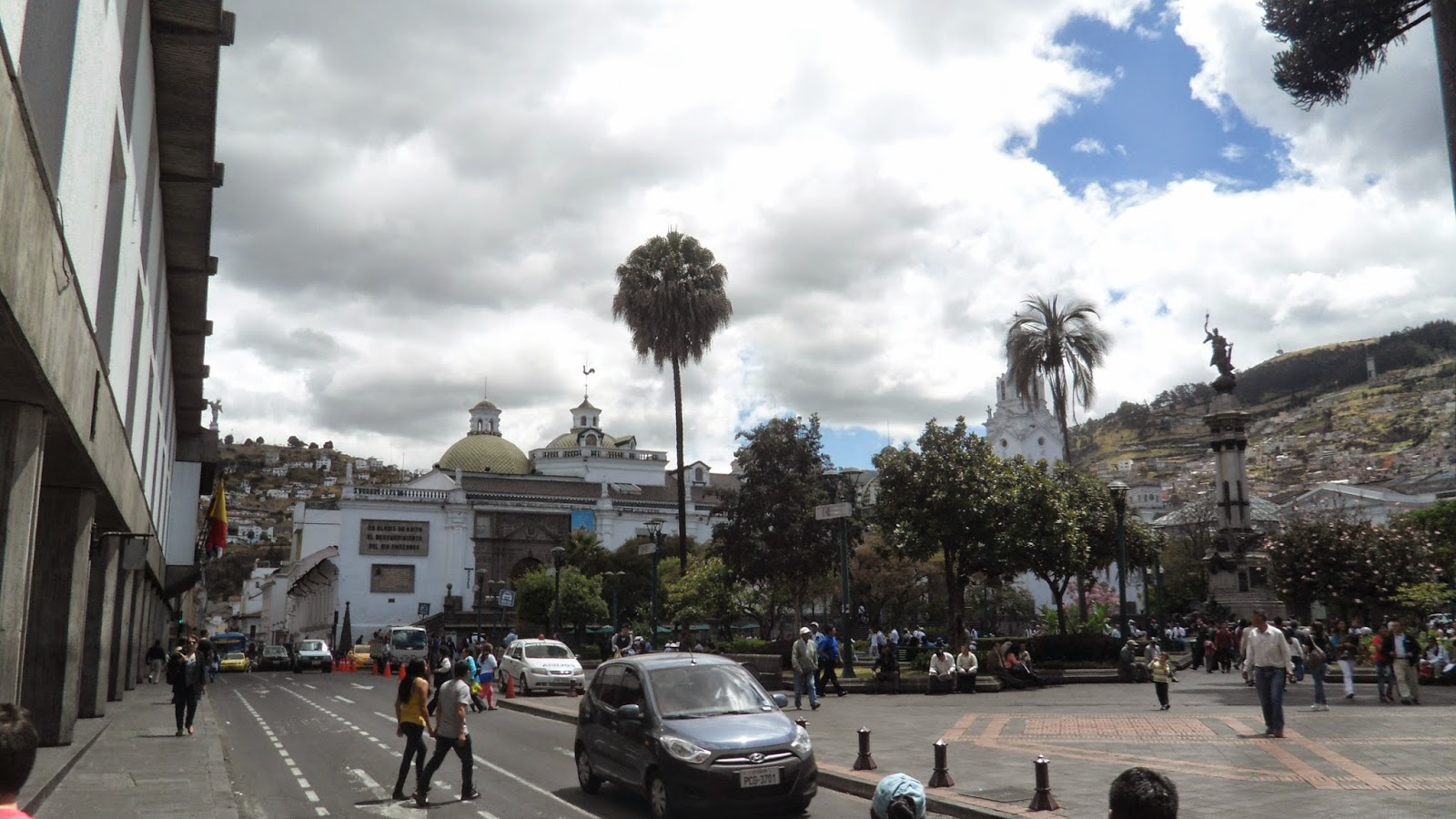I did a little sightseeing the first day after my arrival. As I mentioned in my last post, walking here is exhausting, so I don't even know if I'll end up going jogging or not. Being a pedestrian here's a bit of a hazard. Mostly, there are no walk lights, and cars don't stop for you. So, basically, when you see an opening in the traffic, you take it. Or if somebody else starts walking, you do to - how many pedestrians would a car run over? On the streets, there are vendors selling fruits and vegetables, mostly. Quito isn't a dirty city in the sense that there is trash lying everywhere - it's not any worse than any other big city, and better than a lot, I imagine - but the gas fumes from cars are pretty bad.

First, I walked to the downtown area to check out the artisan market there, where you can buy lots of nice Ecuador souvenirs. I didn't buy anything, but I was tempted. There are things like earrings, shoes, bags, t-shirts, and there was even artisan ice cream. I'm sure I'll be buying some of my gifts there...

After that I ended up in an area in the center of town with lots of museums. I sauntered around Parque Ejido for a while, then, after searching for it for a while, I finally found the National Museum, which houses artefacts from pre-Colombian cultures, as well as Catholic art from the colonial period. The art was less interesting. They also had some more recent paintings toward the end. It was relatively small, and I was still relatively tired, so I didn't stay too long. There were other museums in that area too. I should definitely try to see some of those as well during my time here.
After that I made my way home, only getting lost once along the way...
(PL)
Pierwszego dnia po przyjazdzie zwiedziłem trochę. Jak wspomniałem w
pierwszym poście, chodzenie tu jest trudne, więc, nawet nie wiem, czy w ogóle
będę biegać. Bycie przechodniem jest lekko niebezpieczne. Zwykle nie ma
świateł, i samochody nie zatrzymują dla ciebie. Więc, podstawowo, kiedy widzisz
przerwę w korku, musisz przechodzić. Lub kiedy ktoś inny zaczyna iść, ty też
powinnaś – bo, ilu przechodniów można przejechać? Na ulicach są sprzedawcy
(przede wszystkim kobiety), które normalnie sprzedają owoce i warzywa. Quito
nie jest brudnym miastem w sensie, że wszędzie leży dużo śmieci – w tym nie
jest gorsze od każdego innego wielkiego miasta, i chyba nawet lepsze niż wiele,
wyobrażam sobie – lecz opary benzyny z samochodów są całkiem nieznośne.
Najpierw, poszedłem do centrum nowej części miasta żeby zobaczyć rynek
rzemieślniczy, gdzie można kupować ładne pamiątki z Ekwadoru. Nie kupiłem
niczego tym razem, ale dużo rzeczy było godnych skuszenia. Są rzeczy jak na
przykład kolczyki, buty, torebki, koszulki, i nawet były lody rzemieślnicze. Pewnie
kupię jakieś prezenty tam…
Potem skończyłem w dzielnicy w środku miasta z wieloma muzeami.
Spacerowałem po Parque Ejido przez chwilę, wtedy, po szukaniu przez jakiś czas,
nareszcie znalazłem Muzeum Narodowe, które mieści artefakty kultur
przedkolumbiańskich, a także sztukę katolicką z epoki kolonialnej. Sztuka była
dla mnie mniej ciekawa. Także mieli współczesniejsze obrazy na końcu. Muzeum
było całkiem małe, a ja byłem raczej zmęczony, więc, nie zostałem tak długo.
Jeszcze były inne muzea w tej dzielnicy - naprawdę powinienem spróbować
zwiedzieć kilka z nich podczas mojego pobytu tutaj.















